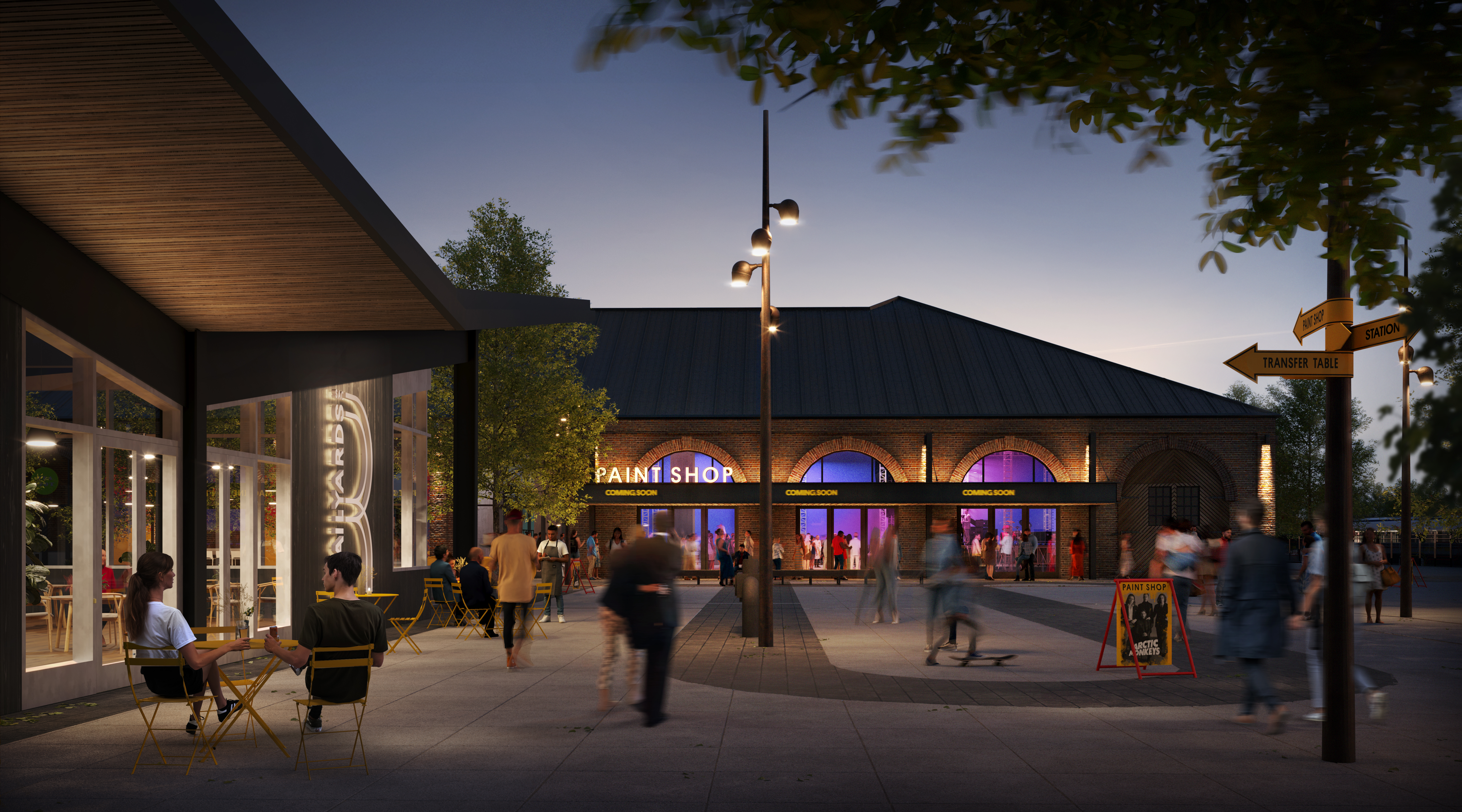
March 8, 2017 / Author: the Railyards
The vision for The Railyards development project is a mixed use urban village, a highly walkable community with nearby amenities, employment, housing, entertainment, and more.
The vision for The Railyards development project is a mixed use urban village, a highly walkable community with nearby amenities, employment, housing, entertainment, sporting, and cultural events at hand. Will The Railyards bring walkable urbanism to the Sacramento area, and what are the benefits of living in a community that relies heavily on alternative forms of transportation such as walking, cycling, and public transport?
What is Walkable Urbanism?
Walkable urban places (WalkUPs) are communities that contain a wide range of housing and employment types, where residents’ daily needs can be met by walking, biking, or public transit.
Walkable urban communities generally include:
- Mixed-use real estate products: a blend of residential, commercial, cultural and institutional uses
- Blended “new” real estate product types, such as rental apartments over a ground floor grocery store
- Connected transportation: multiple transportation options that connect the metro area, most destinations within walking distance
What does a Walkable Community Look Like?
Imagine leaving your house for work in the morning. Instead of getting into your car for an hour long commute, you simply grab your coffee cup and walk out your front door. You walk your kids to their school and then head over to your office. At noon you and a few coworkers stroll out of the office and around the block to your favorite eatery for the lunch special. After work, you stop at market to grab a few things for dinner. On the weekends, you walk your kids and dog to a nearby park, or ride your bikes to a nearby sporting event or museum. In the evening, you and your spouse take a leisurely stroll to a nearby local brewery or restaurant.
The concept of a walkable community, or walkable city, is to have everything you need for your daily needs conveniently and safely located within reach by foot, bike, or easily accessed transit.
And this concept has some major benefits for the people who live and work within these walkable communities.
The Benefits of Walkable Urbanism
The demand for walkable urban places (WalkUPs) is on the rise for consumers, and businesses are beginning to locate to these high-demand communities. Aside from convenience, what are the benefits of walkable communities?
WalkUPS have Environmental Benefits
The most immediate benefit of walkable urbanism that comes to mind is, of course, the environmental benefits of reduced vehicle usage. Walkable urban places can also help combat climate change in other ways, as well.
“A household moving from a drivable suburban house to a walkable urban place can drop its energy usage and GHG emissions by between 50% and 80%,” says Christopher Leinberger, the president of LOCUS, a walkable urban developer organization, professor at George Washington University School of Business, and director of the Center for Real Estate and Urban Analysis.
A Booming Walkable Economy
According to the Foot Traffic Ahead 2016 report published by Leinberger and the George Washington School of Business, research shows that metros with the highest levels of walkable urbanism have greater magnitude of market share gains.
“Walkable urban market share growth in office and multi-family rental has increased in all 30 of the largest metros between 2010-2015, while drivable sub-urban locations have lost market share.” - Foot Traffic Ahead
High Scores for Social Equity
Walkable urban communities have a distinct economic advantage, but that doesn’t mean these communities are only for the wealthiest of households. Surprisingly, the Foot Traffic Ahead report found that metros with the highest levels of walkable urban development also scored highest on measures of social equity.
There is no standard definition for social equity, but it can be equated to affordable housing and transportation costs, which are the two highest household spending categories in the US.
- While rents in highly walkable urban communities come at a premium, these higher rents come at lower transportation costs and greater access to employment opportunities.
- Households of highly walkable urban communities spend nearly 10% less on transportation costs compared to lowest walkable urban neighborhoods.
Households in highly walkable urban metros have substantially greater access to employment opportunities as measured by CNT’s Employment Accessibility Index. (Over a three-fold increase for those living in highly walkable urban metros compared to the least walkable.)
Moderate-income households living in highly walkable urban metros have the lowest transportation costs and greater employment accessibility due to increased density and transit accessibility to these jobs. These two opportunities balance the higher costs of housing in most walkable urban communities.
Companies are Moving Downtown
Corporate America is making a move. After decades of moving out of cities and into suburban office parks and campuses, more and more corporations are now doing the exact opposite. So why are companies saying goodbye to the suburbs and relocating back to urban areas?
A survey of more than 500 corporate offices that relocated to WalkUPs revealed the motivation.
First, companies want to recruit talented Millennials, who last year became the largest component of the American workforce. These prospective employees want to live and work in walkable urban areas, not in isolated suburban campuses and office parks.
Secondly, companies are realizing that relocating to an urban environment help brand them as a 21st century, knowledge-based business. A downtown location supports innovation, connectedness, creativity and collaboration.
Highly walkable urban communities are thriving places that are highly desirable to residents, employers, institutions and major corporations. Highly walkable urban communities have greater opportunities for market share growth, lower transportation costs per household, greater savings on energy usage, better access to employment, and are becoming highly desirable areas for larger companies and corporations to relocate to. The Railyards development project can bring Sacramento to the top of the list of walkable urban metro areas by bringing its vision of a walkable urban community to life.











